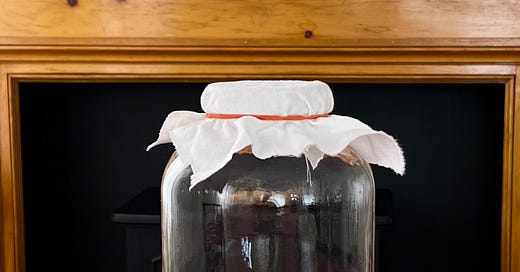VINEGAR MAKES ITSELF — wine in an open bottle will turn sooner or later — but it’s better to give a little help. The process will take weeks, but it will go faster and be surer if you put the wine in a container that allows a wider surface than a bottle does and you provide a warm, dark place. If the wine is strong, it helps to add water. I used to save my leftover wine and every few months refill a small oak barrel, but at one point, for reasons I’ve forgotten, I stopped doing that. The barrel dried out, the staves began to separate, and it leaked. Soaking the barrel in water didn’t undo the damage. Ever since, I’ve made my vinegar in gallon glass jars, and the results seem to me just as good. Even so, no jar matches the romance of a barrel, and it does have a few advantages. A new barrel contributes flavor from the wood itself (oak or another species); the wood ensures darkness; and evaporation concentrates the vinegar. Alternatively and also appealing, there are ceramic vinaigriers (they seem to be an especially French phenomenon) with wooden spigots and wide enough top openings that you can see much of what’s going on. They ensure darkness, but the lid, if you use it, limits evaporation. I go with homely glass because I can easily see all that’s going on inside, and a degree of evaporation takes place through the open top.
© 2025 The Art of Eating
Substack is the home for great culture





